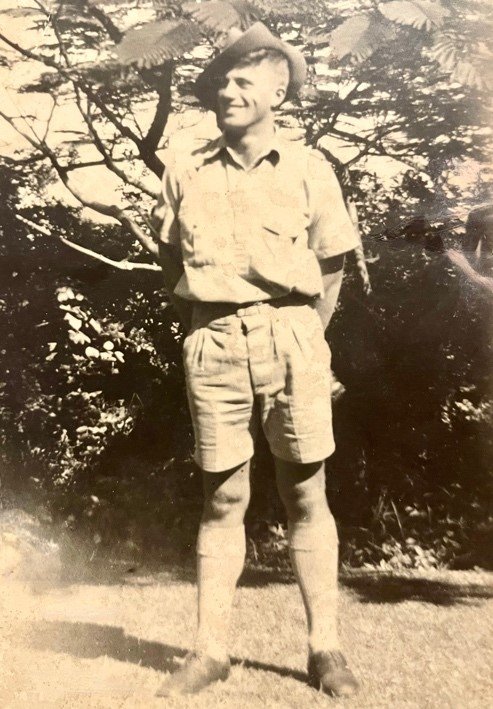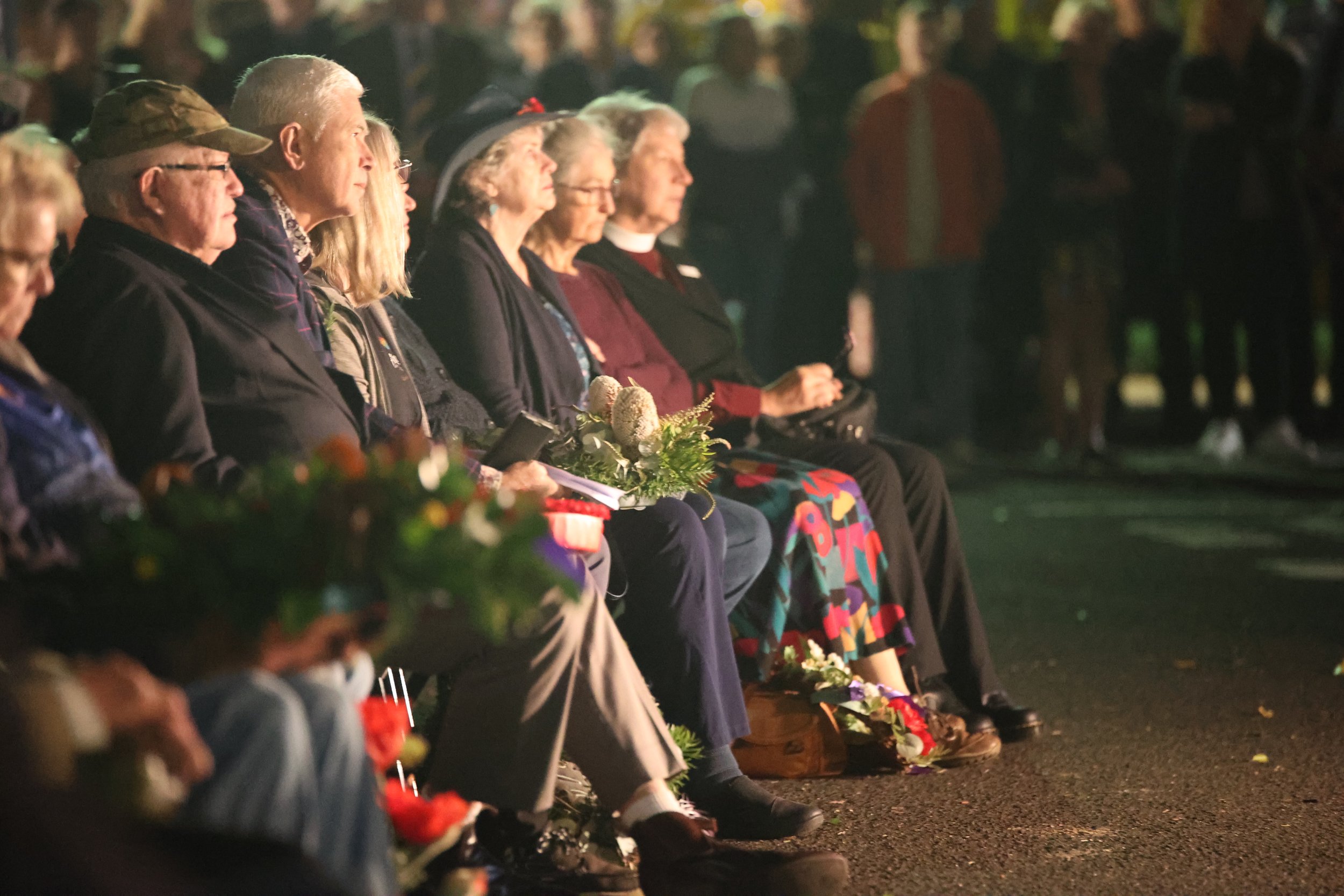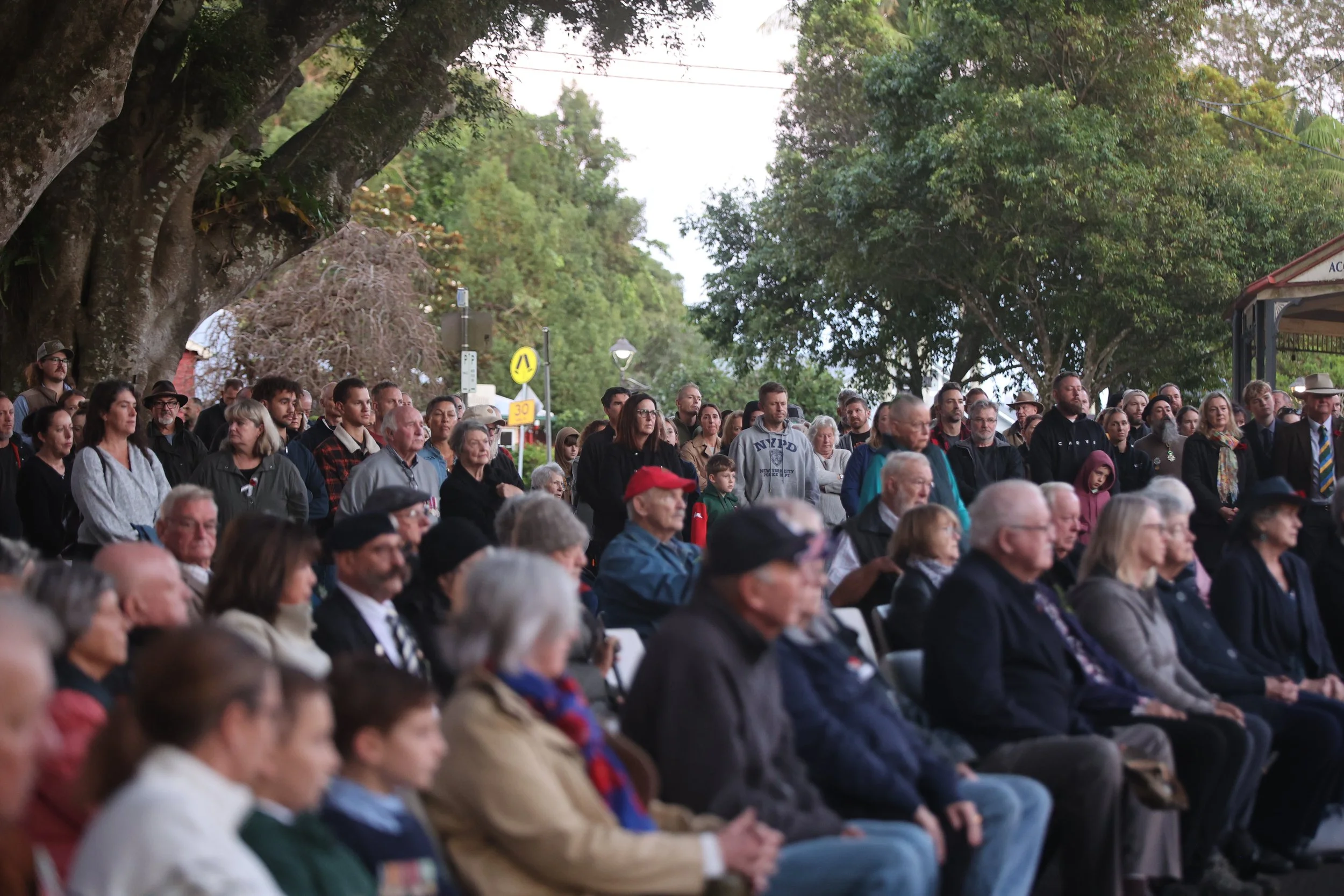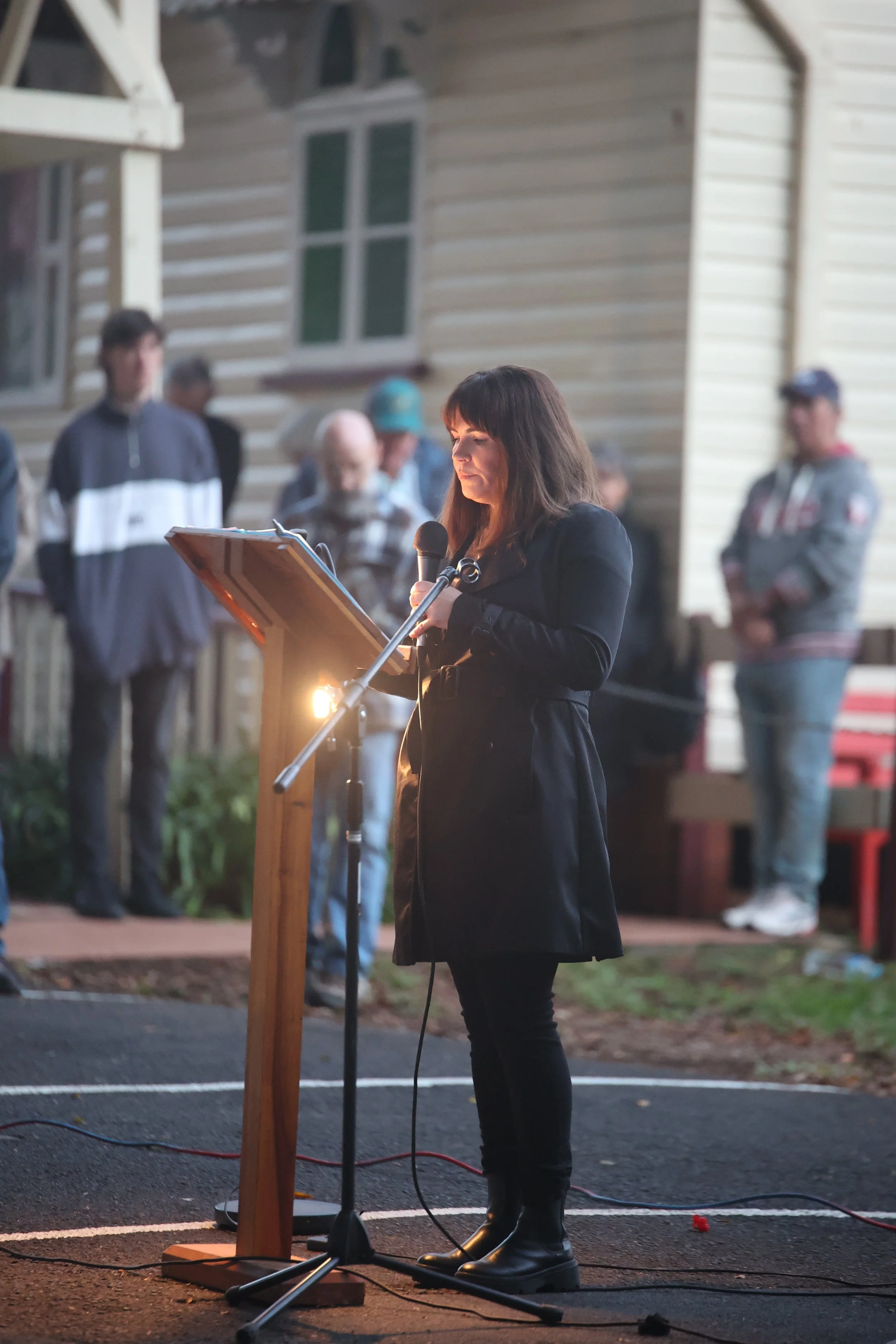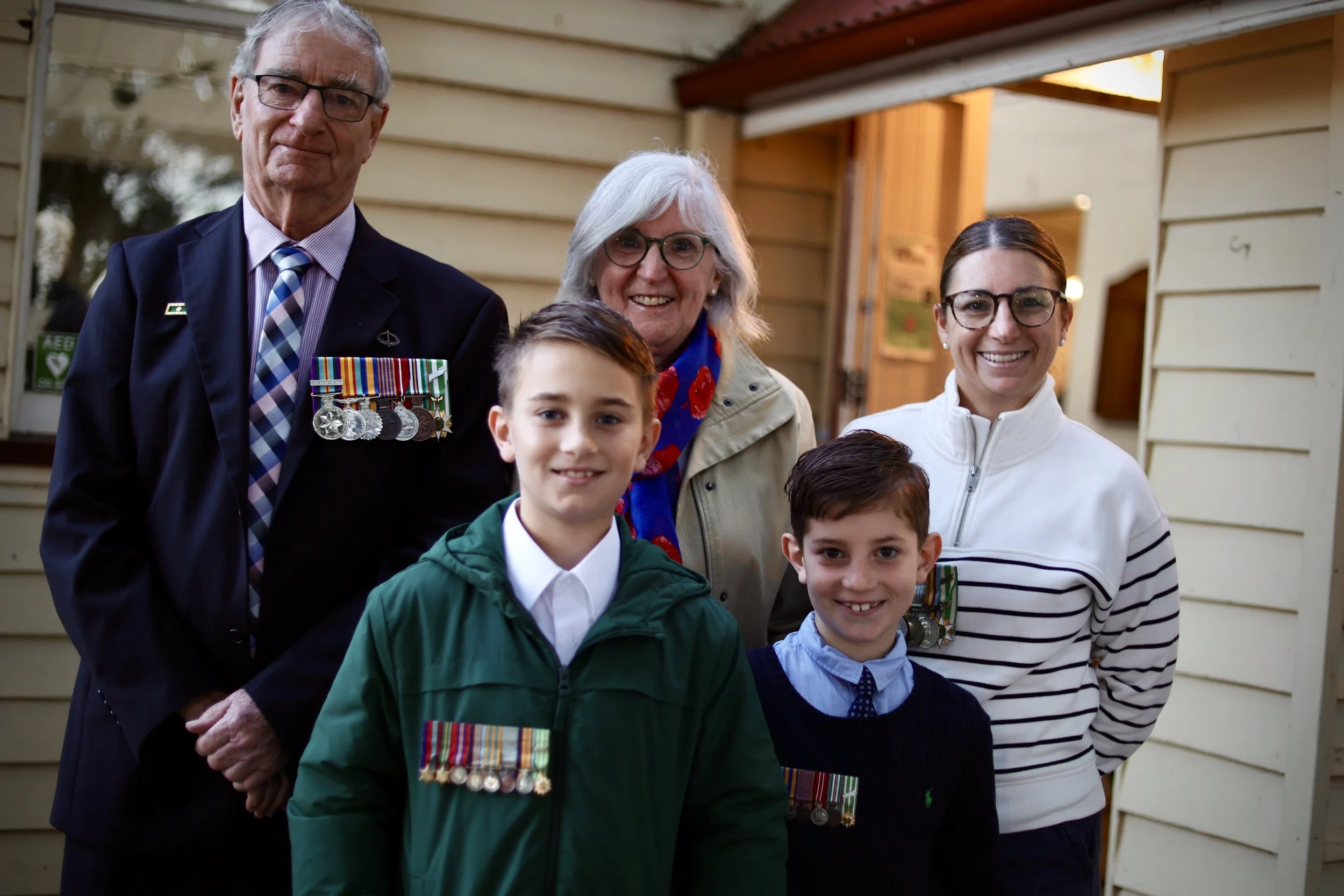Moving Dawn Service remembers six local sons lost to World War II
Hilary York Seccombe Brown, of Montville, outside his home, Craglands, on Balmoral Road.
Honouring Montville’s fallen:
ANZAC Day Address by Montville History Group’s Cate Patterson at the Montville Dawn Service
Every ANZAC Day, we honour all who have served in our name, and all who continue to serve today.
Previous ANZAC Dawn Services have acknowledged the sacrifice and service of Montville fallen from WW1 with only a couple of names known from WW2. 67 men and 13 women are named on the WW2 honour board with another 28 also connected with the district. Of these six were killed. Today we remember them and pay tribute to their young lives – given in service to their nation.
Hilary York Seccombe Brown
Hilary York Seccombe Brown was the youngest son of George and Ruth Brown, a much-respected early farming family. George was a lay preacher and later a Church Warden at St Mary’s Church. Hilary was a true son of Montville. He was born at the family home Craglands, went to school at Montville and attended St Mary’s Church. After he left school he worked with his father as a fruit grower and joined the Militia at 18 when war was first announced.
Hilary was 19 when he enlisted in 1940 and served the next year in the Middle East. Home on leave in May 1942 the newspaper story told of narrow escapes, a bullet piercing his tin hat and grazing his hair, another bullet striking his haversack and grazing his shoulder.
Just a few months later Hilary Brown sailed for Port Moresby.
Hilary Brown was ambushed and attacked by snipers.
While at Townsville on shore leave, Hilary was a guest of family friends for dinner. He called home to Montville, and wrote his mother a letter. It would be the last time his family would hear from him.
Appointed Acting Lance Sergeant, Hilary went into action with the Australian troops fighting the Japanese along the Kokoda Track. He was ordered to take his section to locate another. He accomplished this. Then with daylight fading, Hilary set off alone back through the jungle to report their location.
Hilary on his own, was ambushed and attacked by snipers. His body was found by his men the next day.
Driver Lloyd George (Joe) Foster
Young Joe Foster was working at Montville as a truck driver who did running repairs. He was on the Montville footy team and all of 21 when he enlisted.
Joe and his mate, Allen Harvey, were the first two volunteers from the Montville District for active service and were farewelled together.
They were drivers for the 2/3rd Field Ambulance, and after training were members of the 6th Division.
Joe went to England where he was injured in an air raid in London when a shell struck a shelter, and he was hit in the knees and face with shrapnel. He was later sent to Palestine and then Egypt. Joe was part of the Siege of Tobruk. Only days before the Australian troops were due to be relieved Joe died in a vehicle collision.
Private Leonard James Harvey
Private Len Harvey, like Hilary Brown, was born in Montville, went to school here and worked as a farmhand. His Harvey and Butt grandparents were highly respected early settlers as were his parents James and Daisy Harvey. Len was 19 when he enlisted in 1942. He completed jungle training at Canungra 80km south of Brisbane. The following year he qualified in Infantry Signals. From September 1943 Len served in New Guinea with 2/6 Australian Infantry Battalion.
On leave in December 1944 Len married his 19-year-old sweetheart Joyce Frizzell, and then re-joined his unit at Aitape, New Guinea.
The Aitape – Wewak Campaign was the last Australian campaign in New Guinea. Just two months before the end of the war, Private Leonard Harvey was killed in action. He knew of the birth of his baby son Brian Leonard Harvey on 15 April 1945 and sent telegrams to Joyce rejoicing in his little boy.
Private Richard Leslie Charles Lippett
Private Dick Lippett was a Londoner who immigrated as a 14-year-old with his older sister. Dick was a farm labourer at Montville. He was a keen sportsman and played football for Montville and was captain of the Montville Cricket Club.
Private Lippett was assigned to the 2/15th Infantry Battalion. He left Australia for training and duties in England before heading to Libya, seeing action at the Siege of Tobruk.
He became seriously ill and died from typhoid fever on 28 August 1941.
Ordinary Seaman Jim Berry 260
Ordinary Seaman Jim Berry’s family had immigrated from Manchester, England to become Montville farmers.
Jim joined the Militia when he was 17 and enlisted in the Royal Australian Navy when he was 18.
He trained at HMAS Brisbane until August 1941. After further training at HMAS Cerberus and HMAS Penguin he served aboard the British depot ship HMS Anking based off Java.
Following the fall of Singapore in February 1942, all British craft were ordered to leave Jakarta.
On 4 March 1942, HMS Anking was attacked by a Japanese heavy cruiser squadron off the south coast of Java.
Jim’s ship was sunk and he was not among the survivors. Ordinary Seaman Jim Berry, was just 19 years old.
Gunner Herbert Steinhardt 295
Gunner Herb Steinhardt’s family were Hunchy farmers and Herb went to Palmwoods State School.
He played cricket for both Palmwoods and Montville and was a keen tennis player. He became a member of the 2/14th Light Horse and then enlisted in the 2nd AIF with his brother Hal and joined 2/2 Anti-Tank Regiment as a gunner.
This regiment was deployed in North Africa to undertake the defence of Egypt before taking part in the Syria and Lebanon Campaigns against the Vichy French who controlled these French Protectorates.
Herb was killed in action in Syria aged just 24 years on 10 July 1941. He is buried at the Damascus Commonwealth War Cemetery.
For these six men
For these six men – a sniper attack, a vehicle collision, illness, bombing and combat cruelly ended their young lives along with so many others who stepped up for us.
We stand here and await the dawn together in the hope that one day all wars will end, and peace will prevail.
Lest we forget.

